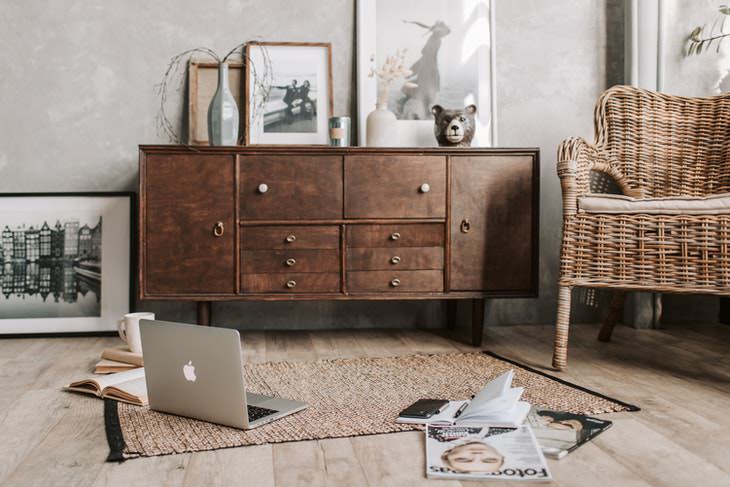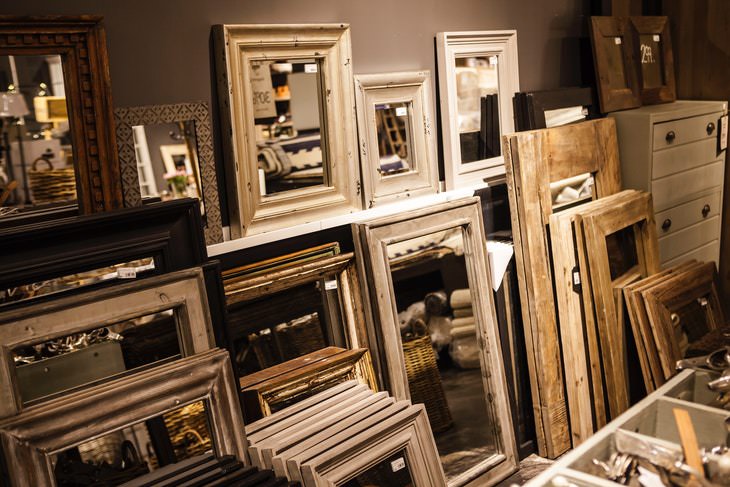1. Shop around for the model before you commit.
Long gone are the days when the only places to purchase used furniture are yard sales and antique shops. Sites like Craigslist and even Facebook Marketplace are a great way to find a beautiful piece in your local area. These resources make buying the piece you have your eyes on at a better price quite easy, especially if it’s a more recent model.
And make no mistake, buying used furniture is all about saving money and avoiding low-quality pieces, so make sure to check the label, brand, and description of the item and know where the piece came from. If the seller doesn’t mention the model of the piece in the description or tag of the item, contact them or ask them personally. Then, just search for the same model online and see if you can find better prices.
You can even search for the price of the new model and see if the seller’s price is reasonable - the second-hand price shouldn’t be more than 50% of the item’s original retail price.
2. Test the furniture before you buy.
A picture may be worth a thousand words, but it’s not enough when purchasing furniture that will become part of your home, hopefully for years to come. You must sample and try out the item before you pay. Otherwise, you could end up with an item that looks pretty but is unpleasant to use.
Trying out each piece means opening every drawer or cabinet to make sure they’re clean and easy to use, sitting in every chair to see that it’s comfortable and stable, and leaning on a table to test if it’s wobbly or not. During the testing process, you may notice minor damage you are willing to fix on your own. This is a great opportunity for you to ask the seller to lower the price. One more thing to consider when testing the piece of furniture is its size.
Shopping for second-hand furniture is different from buying through a catalog: used furniture retailers usually don’t allow returns and they often don’t list the dimensions of the items either. So bring some measuring tape with you and make sure that the piece will fit into your home perfectly before you buy.
3. Close visual inspection is crucial.
When purchasing used furniture, assume the worst and check for every possible issue. For this reason, it’s crucial to check the piece from every angle, especially if it’s an upholstered item that can be damaged more easily. Ask the seller to raise and move it so that you can see if there are any stains or tears in the fabric, rust in metal pieces, or signs of repair on couches, chairs, and tables. When it comes to wooden furniture, check the finish for any warping or water stains - this damage should influence the price of the item.
One of the most important things to check is any signs of insect infestations, namely termites or bedbugs. Look for tiny holes or termite droppings in wooden furniture. Although bed bugs prefer mattresses (which is why we strongly advise against buying a used mattress), they are known to infest other furniture too, such as closets, drawers, couches, and armchairs. Moreover, they can jump from one piece of furniture to another, which makes them especially common at storage unit auctions and antique shops.
Luckily, these bugs leave tracks that let you spot them. Focus on the cracks and corners of the furniture and search for tiny bugs or their droppings that look like brown or red stains clustered together. If you suspect any sign of an infestation, run.
4. Pay attention to any unpleasant smells.
This is one of those details that is very easy to overlook. But you will regret it if you ignore it. Unlike new furniture, second-hand and antique pieces smell like the homes of the previous owner. Some unpleasant smells go away with time, but pet and cigarette odors may linger even after deep cleaning. Take this into account as you’re purchasing the piece or even ask the seller to lower the price if professional cleaning of the item is required.
5. Consider the materials.
Buying used furniture doesn’t mean that you will have to throw it away in a few years. In fact, high-quality pieces last for decades, if not hundreds of years, so buying furniture second-hand is actually a great long-term investment, if you know what to look for. Here are a few tips divided by material:
-Solid wood furniture will probably last you the longest, as long as it’s well taken care of. It is sturdier than particleboard and composite, but it’s also pricier. Different types of wood have various properties too. Oak and maple are stronger and more durable, whereas pine is softer, so it’s not a good choice for tables and sofas that usually have to carry more weight.
-Metal furniture is also a great and affordable find, even if it’s a little rusty or the paint is chipping in some places. This is because refurbishing iron or aluminum furniture is usually easy: all you have to do is take off the old paint or rust and repaint it. At the same time, assess the damage before you spend the money and stay away from items that are severely damaged by rust.
-Veneer and laminate pieces can be beautiful, too, but you need to inspect them carefully before you buy. Veneer furniture is more susceptible to water damage and humidity - over time, the veneer may peel away from the particle board or any other material it is affixed to. If that is the case, and you see that larger pieces of the laminate are not adhering well, keep in mind that they can be difficult or impossible to be glued back. So, it’s safer to skip those items.
Share these tips with family and friends!





